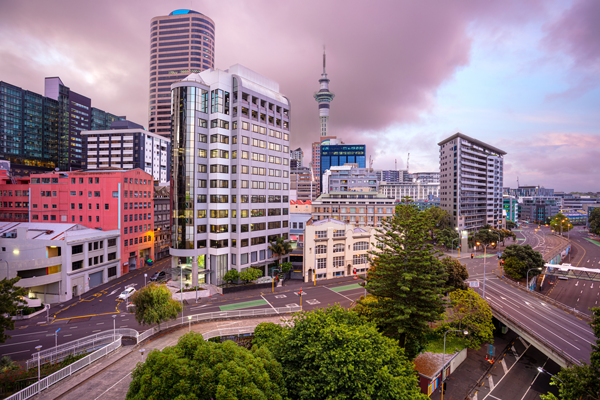By David Jenkins and Steve Mooney
In a recent television interview Geoff Cooper, from the New Zealand Infrastructure Commission Te Waihanga, used an excellent analogy to describe the country’s infrastructure dilemma.
“I think we’ve got a leaky bucket when it comes to New Zealand,” Cooper said.
“There’s two sorts of approaches when you see a leaky bucket. You either want to put more water into it, or you want to start mending those holes to stop the water coming out.
“I would say that in more recent times for many of our sectors we’re more intent on putting more water into that bucket than we are in fixing the holes.”
Cooper was picking up the main theme in the recent Infrastructure Commission report, Build or Maintain?, which went to the very crux of the issue.
For every NZ$10 spent on new infrastructure in NZ, almost NZ$6 in existing infrastructure wears out.
Never mind that NZ spends one dollar out of every 17 it earns as a country – or 5.8% of GDP – on infrastructure investment, the most pressing issue is whether that investment is being wisely spent and if NZ communities are getting a sufficient return on this investment.
The Build or Maintain? report is compelling reading for anyone interested in this issue and it shines a light on a pressing national dilemma, and nowhere is this more apparent than in the health sector.
Here, the trend is only going one way. In 2015, 15% of Kiwis were over 65, and by 2038 that figure will rise to around 25%. That will equate to 1.3 million older people, the demographic which relies the most on the health system.
As the Build or Maintain? report points out, New Zealand’s health infrastructure has not been keeping pace with the changing demographics.
The report shows that while road infrastructure was the single largest investment category, averaging around NZ$700 per person per capita from 2013 through to 2022, hospitals were the lowest spend at NZ$140 per capita.
Although the value of health infrastructure rose from NZ$8 billion in 1990 to NZ$14 billion in 2022 – a 74% increase – this masks the fact that the value of the infrastructure has risen more slowly than the population of people at retirement age.
Digging deeper, the report shows that overall capital investment in central government hospitals fell below estimated levels of depreciation in the mid 1990s and the mid 2010s.
This means that during those periods spending would have been insufficient to cover depreciation needs even if all capital investment in hospitals had been directed towards renewals.
“Investment patterns raise the question of whether decision makers are funding renewal in a way that will ensure sustainable asset performance over time,” the report says.
“In the case of hospitals (and also tertiary education), it may be necessary to spend around three quarters of our current capital investment on renewals to sustain asset condition.”
Going back to Geoff Cooper’s interview, he put it eloquently when he said: “Politicians like to come out and promise new infrastructure and glitzy new projects, because it’s not nearly as sexy to say actually, we’re going to be pouring a whole heap of that money into looking after the assets we already have.”
When it comes to infrastructure investment, Cooper said that “we’re not always incentivised to care,” and that may be true while ageing generations of Kiwi’s manage to maintain their health but there will come a time when the infrastructure and depreciation gap catches up.
The worst case scenario is very grim: obsolete hospital infrastructure overwhelmed by a tsunami of demand.
At that time it may be that the two tiers of NZ Government, which comprise around 70% of infrastructure investment and the lion’s share of the health sector, will be forced to invest in expensive greenfield sites because the infrastructure we have now is beyond repair.
Expensive new hospitals may exist side by side with the abandoned ruins of old facilities which have been neglected to the point that they are too far gone.
That would be a huge waste of resources and time, and most importantly would have a detrimental impact on public finances while also delivering bad health outcomes to society.
We can only hope that the Build or Maintain? report gets the attention it deserves, and that New Zealand can respond on a national scale.














